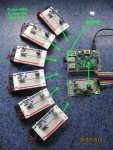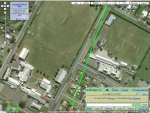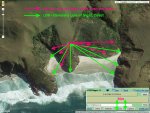Hi
A bit of a scenario but... I have been setting up ultra low power long distance IoT Penguin nest box thermal telemetry based on DS18B20 remoting over bare 433MHz ASK into Raspberry Pi and uploading to Cayenne free IoT dashboard... Great fun if you have not used this sort of idea as it brings your picaxe up on a free / public share-able dashboard / phone Ap with free txt and e-mail message alerts etc. I have developed a kind of uData protocol called 'Cicadacom' - separate topic...
To get each penguin coloney of 4x DS18B20 nesting boxes connected to one 08M2 lasting long enough (one year + off 3x AA Alkaline ) I have found this works nicely:
'Select uPower Sleep mode
pokesfr %01110111,%00000011
'VREGCOn register low power sleep mode
'Normal = %01110111,%00000001
'PIC12(L)F1840 Data Sheet'
IF you connect pin 3 Hi or Low then this can cut idle current massively from several 100 to decimal uAmps
IF you used DISABLEBOD then you can drop into the single digit uAmps
Shed bench I have managed 0.6uAmps in the sleep / nap mode
An interesting calculation to take a CR3012 and divide the above idle current into it's nominal 240 mAh capacity.
Try it !!!
Beware of effeects of serial programming leads when getting right down the bottom. Un plug to test 'actual' uAmps. I note the AXE-027 nicely less effects things but ancient XP UARTS (shed here) can affect things big time...
Tip... DS18B20 work nicely using internal WPU so you can save on those pull up resistors and all that extra soldering. This reduces the project complexity and system to 1 battery + chip + the ASK RF Tx module + 4x temperature sensors
~ Andrew
A bit of a scenario but... I have been setting up ultra low power long distance IoT Penguin nest box thermal telemetry based on DS18B20 remoting over bare 433MHz ASK into Raspberry Pi and uploading to Cayenne free IoT dashboard... Great fun if you have not used this sort of idea as it brings your picaxe up on a free / public share-able dashboard / phone Ap with free txt and e-mail message alerts etc. I have developed a kind of uData protocol called 'Cicadacom' - separate topic...
To get each penguin coloney of 4x DS18B20 nesting boxes connected to one 08M2 lasting long enough (one year + off 3x AA Alkaline ) I have found this works nicely:
'Select uPower Sleep mode
pokesfr %01110111,%00000011
'VREGCOn register low power sleep mode
'Normal = %01110111,%00000001
'PIC12(L)F1840 Data Sheet'
IF you connect pin 3 Hi or Low then this can cut idle current massively from several 100 to decimal uAmps
IF you used DISABLEBOD then you can drop into the single digit uAmps
Shed bench I have managed 0.6uAmps in the sleep / nap mode
An interesting calculation to take a CR3012 and divide the above idle current into it's nominal 240 mAh capacity.
Try it !!!
Beware of effeects of serial programming leads when getting right down the bottom. Un plug to test 'actual' uAmps. I note the AXE-027 nicely less effects things but ancient XP UARTS (shed here) can affect things big time...
Tip... DS18B20 work nicely using internal WPU so you can save on those pull up resistors and all that extra soldering. This reduces the project complexity and system to 1 battery + chip + the ASK RF Tx module + 4x temperature sensors
~ Andrew



